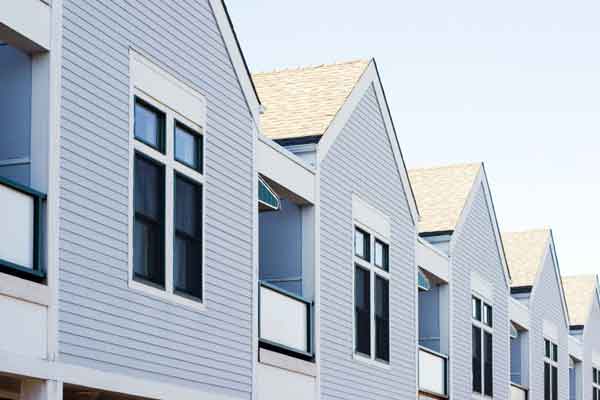
Notice 2022-05 released by the Internal Revenue Service (IRS) on January 10, 2022 provided extensions to various compliance deadlines for low-income housing projects claiming credits under Internal Revenue Code (IRC) Section 42. Prior to the release of Notice 2022-05, the IRS had provided temporary relief in its Notice 2021-12. However, due to the ongoing COVID-19 pandemic, the IRS in its Notice 2022-05 is now extending the period for some of the relief measures.
Please refer to our current blog, “IRS Notice 2022-05 Extends Compliance Deadlines for LIHTCProjects” and to our 1/25/2021 blog “IRS Notice 2021-12 Provides LIHTC Relief and Extends Deadlines.”
One relief measure being extended is the relief for late-leased units. Previously, the IRS Notice 2021-12 provided relief for late leases for the first-year credit periods ending between April 1, 2020 and June 30, 2021. Please refer to our 1/26/2021 blog “Temporary Relief for Late-leased Units in LIHTC Projects.” With Notice 2022-05, the late-lease relief period has been revised to include first-year credit periods ending between April 1, 2020 and December 31, 2022.
The late-lease relief impacts taxpayers that meet all the following:
- end of tax year occurs between April 1, 2020 and December 31, 2022,
- eligible to start their first-year low-income housing tax credit in such year and
- have one or more units in the LIHTC housing project that haven’t yet been qualified (i.e., leased to a qualified tenant) as of the end of such year.
For impacted taxpayers, the IRS is providing some relief for units that are (1) leased-up after the end of the first credit year, and (2) leased by the close of the six-month period following the close of that first year. The basis related to such units is to be included in the qualified basis for the first year of the credit period. Prior to the provided relief, the basis of such unit is not included in qualified basis until a subsequent year in which such unit is leased to a qualified tenant. This is typically referred to as a “late-leased unit.” The increase in qualified basis for the late-leased unit in a subsequent year would then be eligible for the credit, at two-thirds of the normal credit rate, over the remaining 15-year compliance period.
The relief provided in the IRS notice allows the impacted taxpayer to include in qualified basis at the end of the first credit year the basis amounts that are attributed to the applicable units that haven’t yet been qualified as of the end of the first credit year. Such inclusion in Year 1 of the credit period would eliminate the late-leased situation with respect to these units, i.e., the credits for these units would not be subject to the reduced two-thirds credit rate.
Although the IRS Notice 2021-12 and Notice 2022-05 are silent on the computation of the Year 1 credit when basis of the “late-leased” units are included in qualified basis in Year 1 of the credit period, we believe that such units will not generate any credits in Year 1 of the credit period. Normally, first-year credits are calculated using an annual weighted average based on the number of months each unit is qualified.
Units not yet qualified will not be entered into the weighted average computation and therefore, such units will not generate any credits in Year 1.
Remarks on Year 2 LIHTC Computations
IRS Notice 2021-12 and Notice 2022-05 are also silent on the computation of Year 2 credits for these late-leased units. Therefore, there exists some uncertainties. Prior to the issuance of these two IRS notices, in Year 2 when the late-leased units are leased to a qualified tenant, the credit was calculated using the annual weighted average based on the number of months such units were qualified. The basis used in the calculation of the credits for these late-leased units was equal to the increase in qualified basis from Year 1 to Year 2.
Because of the relief provided in the two notices, there is no longer an increase in qualified basis from Year 1 to Year 2 for the applicable late-leased units. Pursuant to the two IRS notices, the basis of the units leased within the first six months of Year 2 are now already included in qualified basis at the end of Year 1.
Therefore, it appears that such units are not subject to the late-leased rules in which (1) credits are reduced by one-third, (2) credits are taken over the remaining 15-year credit period, and (3) computation of credit is subject to the weighted average method. Under IRC Section 42 for units that are not subject to the late-leased rules, the credit is determined by the units’ qualified basis on the last day of the credit period. Therefore, we believe the units will generate credits for the full 12 months in Year 2 if the units were leased within the first six months of Year 2 and the units were still in service on the last day of Year 2.
It is still uncertain if this is the result intended, as the IRS has not issued further guidance.
The late-lease relief, as originally provided in IRS Notice 2021-12 and that is now extended by the IRS, may impact an owner’s decision on choosing the first year to start the credit.
Please contact your engagement lead member or email us at info@lvhj.com, for assistance in evaluating your situation.








